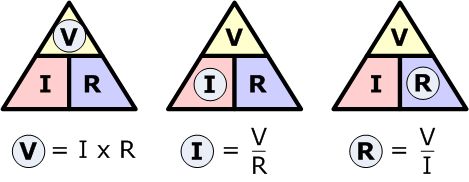Ohm’s law is the biggest part of the Electricity class 10 NCERT solutions. Probably, an important section that all class 10 students should understand the concept perfectly.
Georg Ohm, a Physicist from Germany published this law. He discovered that electricity pass through resistor, which is directly proportional to resistor and voltage.
Ohm’s law indicates the potential difference between two points, the current through conductor is directly proportional to the electric current across those two points.
On any given constant temperature, the electricity flow proportional through linear resistance based on the voltage applied and inverse proportional through the resistor.
The term Ohm denotes a Greek letter’Ω’. 1 Ohm R (Resistance) is equal to 1 A current flow through the conductor between two points, which has the potential difference and is equal to 1 V.
Equation
Ohms law class 10 equation
It is one of the equations used widespread in a majority of electronic calculations. So it is essential for the students to understand it properly and remember accurately. Electricity class 10 NCERT solutions are helpful for the students to grasp the core.

- Current – I (electricity circuit), measured in Amperes
- Voltage – V (Potential differences across the end points), measured in volt
- Resistance – R (Constant of Proportionality), measured in Ohm
- Amperes – A
Many times, it is easier to remember the Ohms law using the pictures. Below are the triangle pictures for each element, which is collectively called OHMs Law Triangle. It will be easy to remember the Ohms law class 10 equation, through pictures. The arrangement of the elements represents the position within the ohms law formula.
Ohm’s law details about understanding the relationship between the electric current, voltage, and resistor.

Voltage
To find the Voltage, ( V )
[ V = I x R ] V (volts) = I (amps) x R (Ω)
Current
To find the Current, ( I )
[ I = V ÷ R ] I (amps) = V (volts) ÷ R (Ω)
Resistance
To find the Resistance, ( R )
[ R = V ÷ I ] R (Ω) = V (volts) ÷ I (amps)
Resistance of any conductor refers to the property of the conductor which opposes the flow of charge.
Ohms law is very easy to understand and simple to execute. You can work with electrical circuits with different applications of Ohms law. It is an indispensible part of the instrumentation world.











